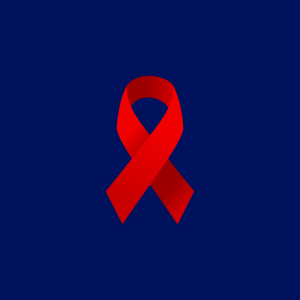Historical & Current Events dictionary
World AIDS Day
[ wurld eydz dey ]
What is World AIDS Day?
World AIDS Day is an annual event dedicated to promoting the effort to eradicate HIV and AIDS, to supporting the tens of millions of people living with the disease, and to remembering, celebrating, and mourning the more than 35 million people who have died as a result of the AIDS epidemic.
The history of the AIDS epidemic has involved widespread stigmatizing of the disease and those who have it, especially of those that it disproportionately affects, including gay and bisexual men. Part of the focus of World AIDS Day is identifying and eliminating such stigmas.
The day also often involves educational campaigns meant to raise awareness around advances in treatment and the best ways to avoid contracting or transmitting HIV, including frequent testing.
World Aids Day is the first day of the related event known as HIV/AIDS Awareness Month, which is observed during December.
Red ribbons are commonly used as a symbol of HIV/AIDS awareness, remembrance of those who have died, and support for those living with the virus. They are commonly worn and displayed during World AIDS Day and HIV/AIDS Awareness Month.
⚡️When is World AIDS Day?
World AIDS Day is observed each year on December 1.
Where does World AIDS Day come from?

World AIDS Day was established in 1988 by James Bunn and Thomas Netter as part of their work for the World Health Organization. The December 1 date is thought to have been chosen due to being suitable for media attention in the period following the end of the 1988 U.S. presidential election.
The campaign was taken over by the United Nations in 1996. The day is one of the longest-running and most widely observed events devoted to public health.
Examples of World AIDS Day
What is the difference between HIV vs. AIDS?
HIV (an abbreviation of human immunodeficiency virus) is a retrovirus that causes AIDS (it is sometimes known as the AIDS virus). AIDS stands for Acquired Immunodeficiency Syndrome. It’s an immune system disease characterized by increased susceptibility to infections. The virus is primarily transmitted through blood or blood products that enter the body’s bloodstream.
Modern treatment has greatly reduced the health impact on many people living with HIV or AIDs. Such treatment is often also very effective at preventing transmission of the virus.
Note
This is not meant to be a formal definition of World AIDS Day like most terms we define on Dictionary.com, but is rather an informal word summary that hopefully touches upon the key aspects of the meaning and usage of World AIDS Day that will help our users expand their word mastery.